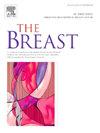Clinical genome sequencing in patients with hereditary breast and ovarian cancer: Concept, implementation and benefits
IF 7.9
2区 医学
Q1 OBSTETRICS & GYNECOLOGY
引用次数: 0
Abstract
Hereditary breast and ovarian cancer (HBOC) is one of the most frequent genetic cancer predisposition syndromes. Individuals at risk are identified mainly by family history and histopathological criteria. The current standard genetic testing is exome or panel sequencing. However, many high-risk families remain genetically unexplained. Genome sequencing has the potential to increase the diagnostic yield. This single-center real-world study aims to evaluate advantages of short-read genome sequencing (GS) in HBOC families. We report genome sequencing results of 818 index patients, who fulfilled clinical criteria for genetic testing. Data analysis showed less sequencing gaps and a more uniform coverage compared to a large cohort of in-house exomes. Samples were sequenced at an average depth of 41.2x for the HBOC core genes. Pathogenic variants were found in 9 of 13 core genes in 12.2 % of the patients. GS allowed the classification of a BRCA1 duplication and detected a whole-exon inversion in BARD1, as well as a deep intronic CHEK2 variant. Furthermore, we successfully used the BRIDGES-PRS in our HBOC cohort and found a significant effect size compared to the control cohort (p = 4.804−14, Cohen's-D: 0.476), proving the transferability to a German cohort. GS offers a wealth of information, including the improved detection of structural variants, copy number variants, and parallel detection of complex genetic markers. This has the potential for future analyses, including intronic and intergenic regions. Finally, it also allows for a more streamlined process by converging several tests into one. The approach presented will give guidance for the implementation of GS in HBOC diagnostics.
遗传性乳腺癌和卵巢癌患者的临床基因组测序:概念、实施和益处
遗传性乳腺癌和卵巢癌(HBOC)是最常见的遗传性癌症易感性综合征之一。有风险的个体主要通过家族史和组织病理学标准来确定。目前标准的基因检测是外显子组或小组测序。然而,许多高危家庭的基因仍然无法解释。基因组测序有可能提高诊断率。这项单中心现实世界研究旨在评估短读基因组测序(GS)在HBOC家族中的优势。我们报告了818例指数患者的基因组测序结果,这些患者符合基因检测的临床标准。数据分析显示,与大量内部外显子组相比,测序差距更小,覆盖范围更均匀。对样本进行平均41.2倍深度的HBOC核心基因测序。在12.2%的患者中,13个核心基因中有9个存在致病性变异。GS允许对BRCA1重复进行分类,并在BARD1中检测到全外显子倒置,以及深内含子CHEK2变体。此外,我们成功地在我们的HBOC队列中使用了BRIDGES-PRS,并发现与对照队列相比具有显著的效应量(p = 4.804−14,Cohen’s- d: 0.476),证明了其可转移到德国队列。GS提供了丰富的信息,包括改进的结构变异检测、拷贝数变异检测和复杂遗传标记的平行检测。这有可能用于未来的分析,包括内含子区和基因间区。最后,它还允许通过将多个测试合并为一个测试来简化流程。所提出的方法将为在HBOC诊断中实施GS提供指导。
本文章由计算机程序翻译,如有差异,请以英文原文为准。
求助全文
约1分钟内获得全文
求助全文
来源期刊

Breast
医学-妇产科学
CiteScore
8.70
自引率
2.60%
发文量
165
审稿时长
59 days
期刊介绍:
The Breast is an international, multidisciplinary journal for researchers and clinicians, which focuses on translational and clinical research for the advancement of breast cancer prevention, diagnosis and treatment of all stages.
 求助内容:
求助内容: 应助结果提醒方式:
应助结果提醒方式:


